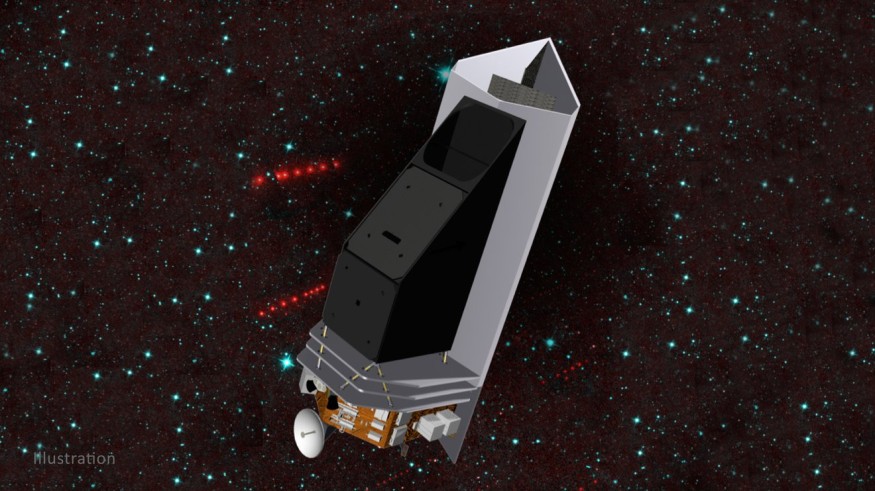A new space telescope is one step closer to becoming a reality, allowing scientists to see potentially dangerous asteroids and comets heading for Earth.
NASA has given the green light for the Near-Earth Object Surveyor space telescope, also known as NEO Surveyor. The 20-foot-long infrared telescope would aid planetary defense by assisting astronomers in locating asteroids and comets that approach Earth's orbit within 30 million miles.
The launch date for the mission is presently set for the first half of 2026.
"NEO Surveyor will have the capability to rapidly accelerate the rate at which NASA [can] discover asteroids and comets that could pose a hazard to the Earth, and it is being designed to discover 90% of asteroids 459 feet in size or larger within a decade of being launched," said Mike Kelley, NEO Surveyor program scientist at NASA Headquarters, in a statement per NASA.

World Asteroid Day: How NASA is Preparing for Near-Earth Objects
Wednesday is World Asteroid Day, commemorating the Earth's largest documented asteroid impact while also highlighting the real threat of asteroids colliding with the planet.
In 1908, a massive asteroid collided with the Podkamennaya Tunguska River in Russia's far-flung Siberian wilderness. The event flattened trees and destroyed forests over an area of 770 square miles, roughly the size of three-quarters of the state of Rhode Island in the United States. People in a community 40 miles distant were thrown to the ground by the impact.
It also explains why astronomers and the Asteroid Day organization want people to be aware of the situation. NASA and other space organizations worldwide are focusing their efforts on detecting the threat of near-Earth objects, or NEOs, that might cause serious devastation.
NASA achieved its objective of finding 90% of all near-Earth objects larger than 3,280 feet in size in 2010. The National Aeronautics and Space Administration Act of 2005 then instructed the government to discover 90% of NEOs larger than 459 feet.
NASA has discovered 40% of the objects in this range so far.
"Each night, astronomers across the globe diligently use ground-based optical telescopes to discover new NEOs, characterize their shape and size, and confirm they do not pose a threat to us," said Kelly Fast, program manager for NASA's NEO Observations Program, in a statement.
"Those telescopes are only able to look for NEOs in the night sky. NEO Surveyor would allow observations to continue day and night, specifically targeting regions where NEOs that could pose a hazard might be found and accelerating the progress toward the Congressional goal."
How NEO Surveyor Could Help Astronomers Detect Near-Earth Object
Astronomers can track potentially harmful NEOs thanks to their capacity to discover and describe them. For the next century, there are no known NEO impact hazards to Earth. On the other hand, unknown NEOs might have unexpected consequences, as the Chelyabinsk event in Russia demonstrated.
Space.com said a near-Earth object entered the planet's atmosphere in Chelyabinsk, Russia, sometime 2013. It burst in the air, unleashing 20 to 30 times the energy of the first atomic bombs, producing a brightness larger than the sun, emitting heat, and destroying over 7,000 buildings and injuring over 1,000 people. The shockwave shattered windows as far as 58 kilometers distant. Because the asteroid came from the same direction and course as the sun, it went undetected.
Planetary.org said the NEO Surveyor will utilize infrared sensors to aid astronomers in their search for these objects, including those that may approach Earth during the day from the sun's direction. This is not something that ground-based observatories can do.
The NEO Surveyor can detect asteroids using infrared light to detect their heat. Astronomers can use this data to determine the location, velocity, and size of NEOs. The telescope will travel outside of the moon as part of its orbit. This position will allow it to survey the sky for asteroids with orbits that bring them close to Earth.
According to Mainzer, near-Earth objects approaching Earth are warmed by the sun. They emit heat that the NEO Surveyor mission will be able to detect. Even near-Earth objects as black as a lump of coal will be visible to our infrared cameras. Astronomers hope to find potentially harmful NEOs with NEO Surveyor when they were years or decades away from a prospective impact. The goal is to give ourselves as much time as possible to create mitigation strategies that will allow us to push them out of the way.
RELATED ARTICLE : NASA Approves Near-Earth Object Space Telescope; Will It Improve Planetary Defense Efforts?
Check out more news and information on Space on Science Times.
© 2025 ScienceTimes.com All rights reserved. Do not reproduce without permission. The window to the world of Science Times.











